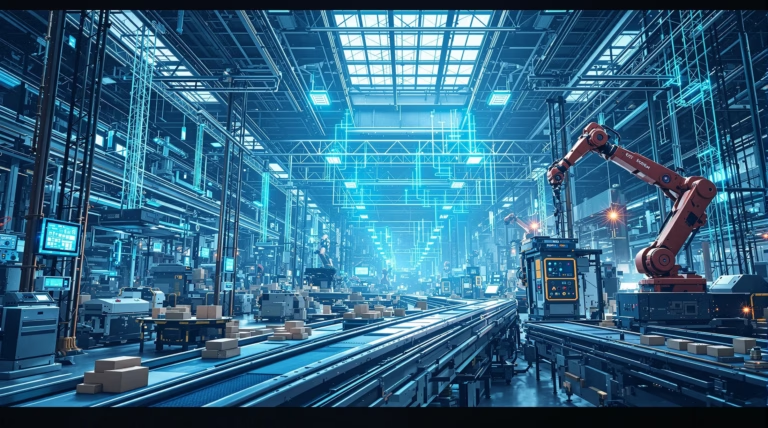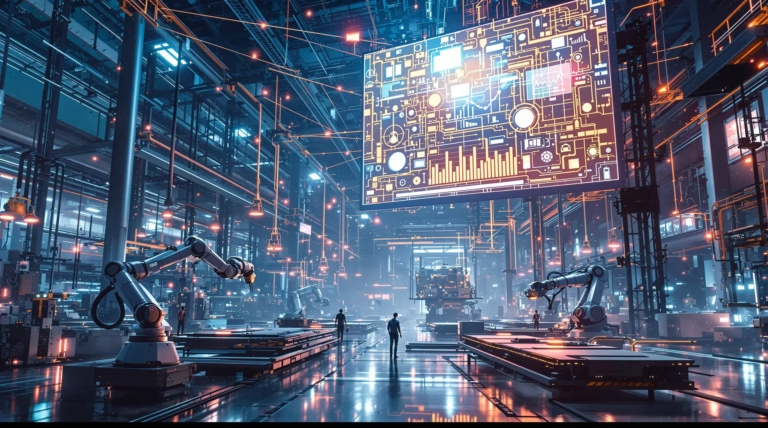Manufacturing Software: Top Solutions for 2025
In today’s rapidly evolving industrial landscape, manufacturing software has become the cornerstone of successful production operations. Let’s explore the most innovative solutions shaping the manufacturing sector as we approach 2025, helping you make informed decisions for your business transformation.
Manufacturing software represents a critical technological backbone for production-focused businesses in today’s digital era. These comprehensive solutions integrate and optimize various aspects of manufacturing operations, from initial planning stages to final product delivery. As we approach 2025, these systems have evolved from simple production tracking tools into sophisticated platforms that drive efficiency across entire manufacturing ecosystems.
Modern manufacturing software empowers companies to streamline workflows, reduce operational costs, and make data-driven decisions through real-time analytics and reporting capabilities. By connecting previously siloed business functions into cohesive platforms, these solutions provide unprecedented visibility into production processes, enabling manufacturers to remain competitive in an increasingly demanding global marketplace.
What is Manufacturing Software?
Manufacturing software encompasses specialized systems designed to manage, optimize, and integrate the essential processes within production environments. At its core, it serves as a centralized platform that connects various operational aspects, including:
- Inventory management and control
- Production scheduling and planning
- Order processing and tracking
- Quality control systems
- Financial oversight and reporting
These platforms include:
- Manufacturing Execution Systems (MES) – for shop floor activities
- Quality Management Systems (QMS) – for product standards
- Supply Chain Management solutions – for material sourcing and distribution
Importance of Manufacturing Software in 2025
The value proposition of manufacturing software extends far beyond basic automation. Key benefits include:
- Enhanced production efficiency through automated processes
- Advanced analytical capabilities for bottleneck identification
- Predictive maintenance capabilities
- Scalable solutions that grow with business needs
- Granular cost tracking for better expense management
- Real-time visibility across operations
Top Manufacturing Software Solutions for 2025
As manufacturing operations grow increasingly complex, the right software solutions have become critical for maintaining competitive advantage. Looking ahead to 2025, several cutting-edge platforms are positioned to transform how manufacturers operate. These systems go beyond traditional functionality to integrate advanced technologies that enable greater visibility, flexibility, and efficiency across the entire manufacturing process.
Leading ERP Systems for Manufacturing
| ERP Solution | Key Features |
|---|---|
| Epicor | Robust functionality across diverse manufacturing sectors |
| IFS | Enhanced integration capabilities |
| Infor | Industry-specific functionality |
| NetSuite | Real-time analytics dashboards |
| Plex | Comprehensive production management |
Cloud-Based Manufacturing Software
Cloud-based solutions offer significant advantages for modern manufacturing operations:
- Reduced initial implementation costs
- Continuous updates and improvements
- Enhanced collaboration capabilities
- Superior scalability options
- Simplified integration pathways
- Reduced IT support requirements
Notable solutions include Autodesk Fusion 360 and Katana, which provide comprehensive cloud-based systems for centralized production management, inventory control, and sales processing in accessible interfaces.
AI and IoT in Manufacturing Software
Artificial Intelligence and Internet of Things technologies are revolutionizing manufacturing software, creating powerful opportunities for automation and data-driven operations. Solutions like Insights Hub demonstrate this evolution by leveraging industrial IoT to build comprehensive manufacturing intelligence ecosystems. These advanced platforms enable:
- Real-time equipment performance monitoring
- Predictive maintenance scheduling based on usage patterns
- Automated quality control systems for defect prevention
- Pattern recognition and anomaly detection
- Data-driven decision optimization
Implementing AI and IoT technologies requires strategic planning to address potential challenges. Organizations should focus on:
- Establishing robust cybersecurity frameworks
- Developing comprehensive workforce training programs
- Selecting platforms compatible with existing infrastructure
- Partnering with specialized IoT solution providers
- Customizing implementations for specific manufacturing needs
Trends in Manufacturing Software for 2025
The manufacturing sector is experiencing a significant shift toward data-driven, automated systems that enhance productivity while reducing operational costs. Modern manufacturing software now encompasses comprehensive solutions including ERP systems, Manufacturing Execution Systems (MES), and Quality Management Systems (QMS).
| Software Type | Primary Function |
|---|---|
| Insights Hub | Industrial IoT integration |
| NX | Manufacturing design |
| Opcenter | Manufacturing operations |
Digital Transformation in Manufacturing
Digital transformation has become essential for manufacturing evolution, though implementation challenges persist. A 2020 McKinsey & Company study revealed that 70% of digital transformation initiatives in manufacturing fail to meet objectives, highlighting the complexity of transitioning to integrated digital ecosystems.
Enterprise manufacturing intelligence (EMI) software leads successful digital transformation efforts by:
- Collecting and analyzing real-time data across business systems
- Enabling 3D modeling for tool and machinery design
- Supporting virtual testing before physical implementation
- Providing cross-silo visibility
- Reducing costs associated with physical modifications
Smart Manufacturing Solutions
Smart manufacturing solutions merge operational technology with information technology, creating intelligent production environments. By 2025, these platforms will extend beyond basic production management to include predictive capabilities and autonomous decision-making functionality.
Key benefits of smart manufacturing implementation include:
- Automated process management
- Comprehensive operational visibility
- Enhanced inventory management
- Production planning optimization
- Real-time analytics capabilities
- Sophisticated workflow management
Choosing the Right Manufacturing Software
Selecting optimal manufacturing software requires careful evaluation of how each platform aligns with specific production requirements and organizational goals. The ideal solution should strengthen operational processes while providing flexibility for future growth. When evaluating options, consider partnering with established providers who offer reliable support throughout the software lifecycle, ensuring sustained operational excellence in increasingly complex manufacturing environments.
Factors to Consider When Selecting Software
When evaluating manufacturing software options, functionality alignment with your specific operational needs should be the primary consideration. The platform must effectively address your production challenges across multiple areas:
- Inventory management capabilities
- Quality control systems
- Production scheduling tools
- Automation features for repetitive tasks
- Analytics for production monitoring
- Comprehensive reporting tools
- Cost tracking functionality
The reputation and history of software providers merit careful examination—established vendors with proven manufacturing sector experience typically deliver more reliable solutions and superior support compared to market newcomers.
| Evaluation Criteria | Considerations |
|---|---|
| Scalability | Ability to handle increased production volumes without system overhaul |
| Total Cost | Implementation, training, maintenance, and customization expenses |
| User Experience | Customer feedback, industry reviews, and case studies |
Future-Proofing Your Manufacturing Software
To maintain viability in the rapidly evolving production landscape of 2025 and beyond, manufacturing software must demonstrate commitment to continuous innovation. Select platforms that regularly incorporate emerging technologies and industry best practices through consistent updates.
- Robust APIs and pre-built connectors for seamless integration
- Cloud-based capabilities for simplified upgrades
- Modular architecture supporting incremental adoption
- Clear development roadmaps
- Active customer feedback integration
Manufacturing environments increasingly demand flexibility and adaptability. Your chosen software solution should evolve alongside your business, accommodating new production methods, changing customer expectations, and emerging regulatory requirements. Vendors maintaining transparent development strategies and responsive customer feedback systems typically deliver more forward-looking solutions that adapt to evolving manufacturing requirements.







